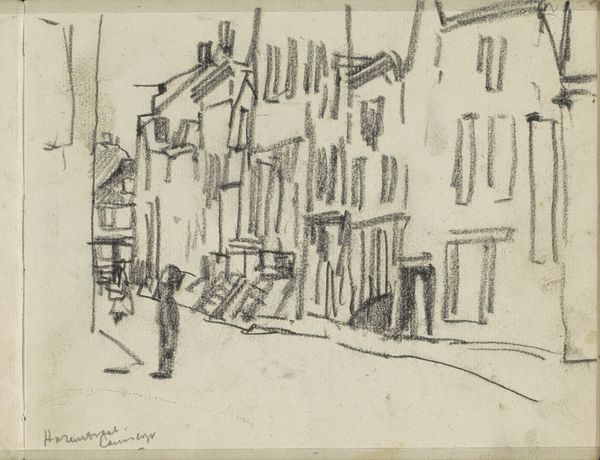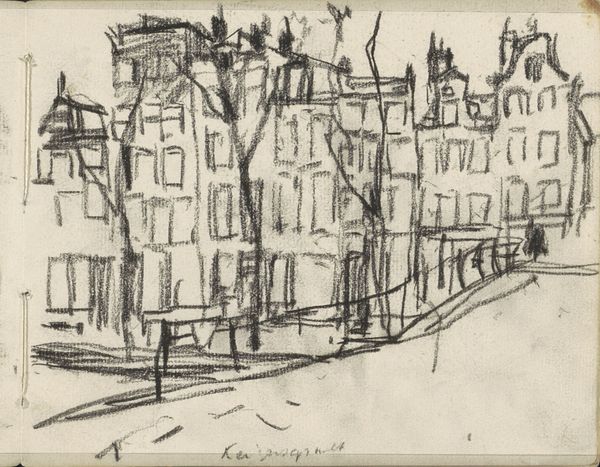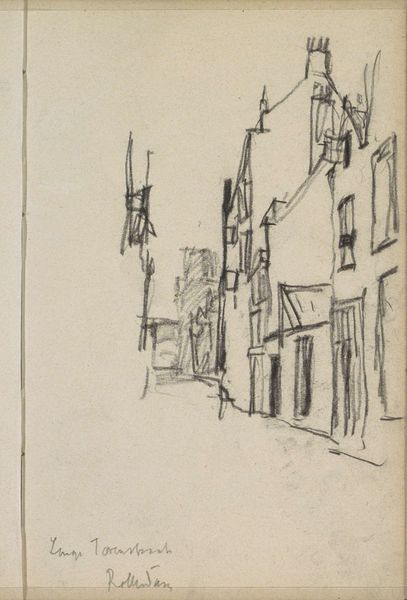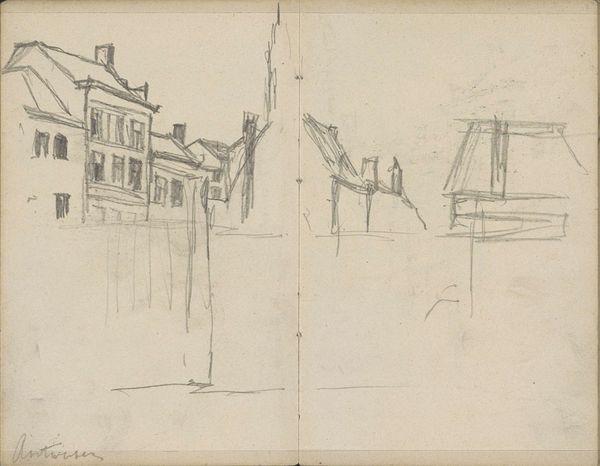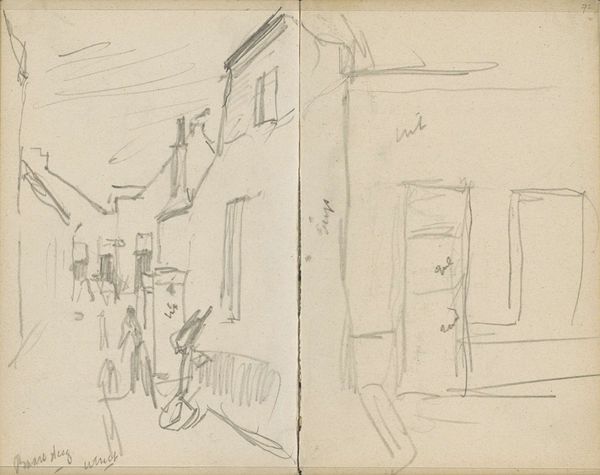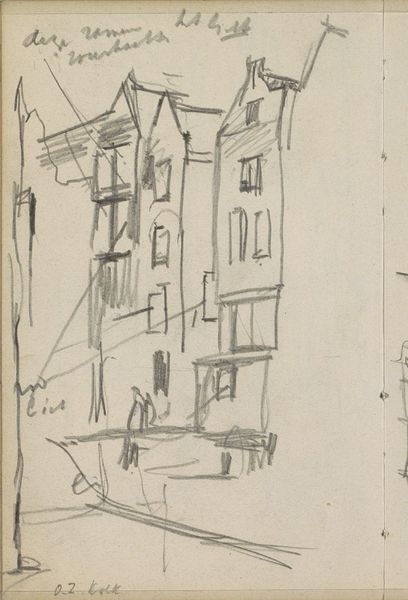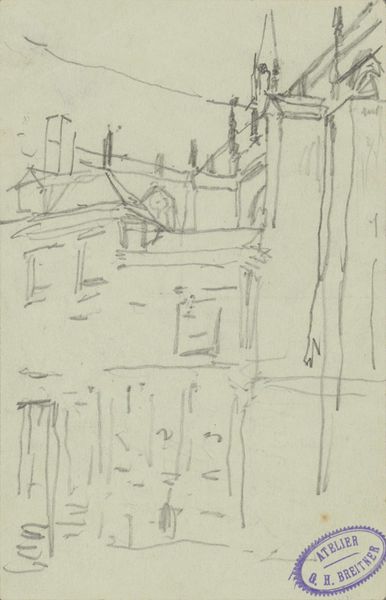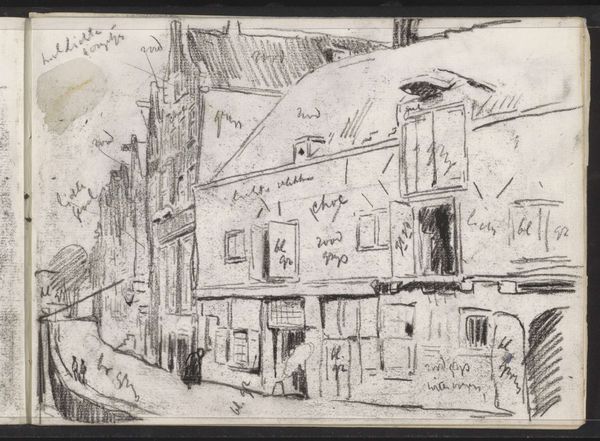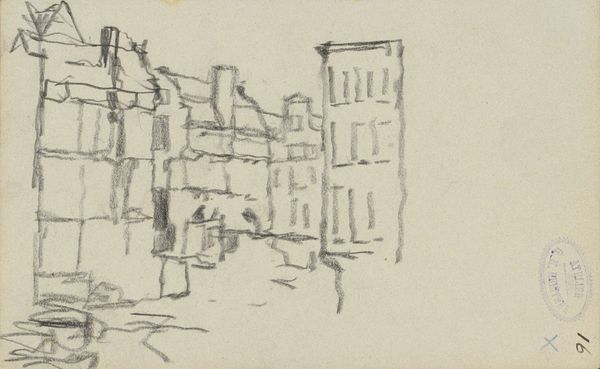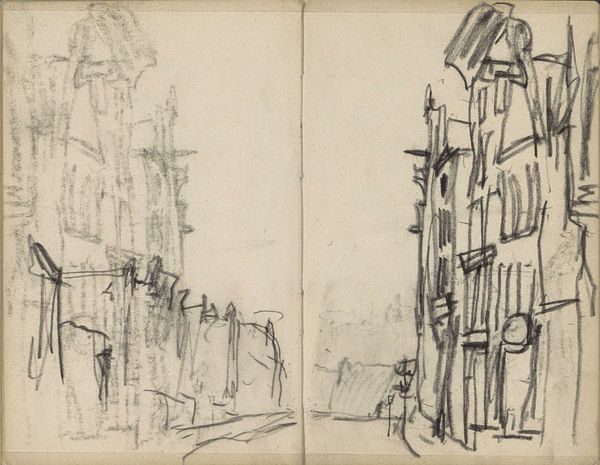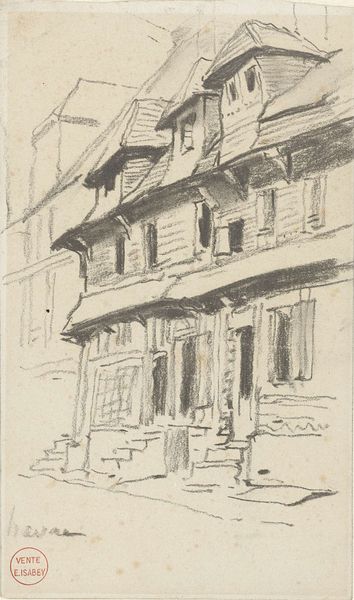
Copyright: Rijks Museum: Open Domain
Editor: So, this is George Hendrik Breitner’s “Huizen aan de Looiersgracht te Amsterdam,” a cityscape done in ink on paper, sometime between 1886 and 1903. There’s a definite feeling of immediacy to it, like a snapshot. What's your read on this piece? Curator: Well, Breitner was known as 'the painter of Amsterdam,' and pieces like this offer a gritty, unromanticized look at the city, quite different from the idyllic scenes we often associate with the Dutch Golden Age. Do you notice how the quick, almost crude lines, seem to capture a moment of everyday life, rather than an idealized version of it? Editor: Yes, it's almost like he's capturing the fleeting essence of the scene. But what was Amsterdam like then? What statements was he making? Curator: Amsterdam at the end of the 19th century was experiencing rapid industrialization and social change, a sharp class divide. Breitner, through his association with the Maatschappij tot Bevordering der Arbeiderswoningbouw, was acutely aware of the living conditions of the working class. His choice to depict the city in this way challenges the prevailing aesthetic norms, doesn't it? How do you think it speaks to a contemporary audience? Editor: Absolutely. He seems to resist romanticizing urban life. I guess that resonates, because we're bombarded with idealized images, and it's a shock when art presents a more truthful viewpoint. What can we take from the subject? Curator: Considering the power dynamics inherent in urban planning and representation, I wonder what is not represented as well as what is included in this work. It’s like Breitner prompts us to consider the stories and experiences behind those closed doors, who had power and who didn’t, and to think critically about the reality of progress. Editor: This has been so interesting. I didn’t expect this simple drawing to carry so much meaning and invite us to question social norms. Curator: Exactly. And that's the power of art – it can be a mirror reflecting the complexities of society and inviting critical engagement.
Comments
No comments
Be the first to comment and join the conversation on the ultimate creative platform.
